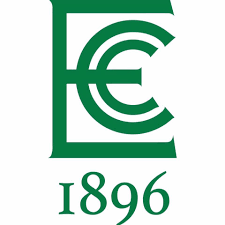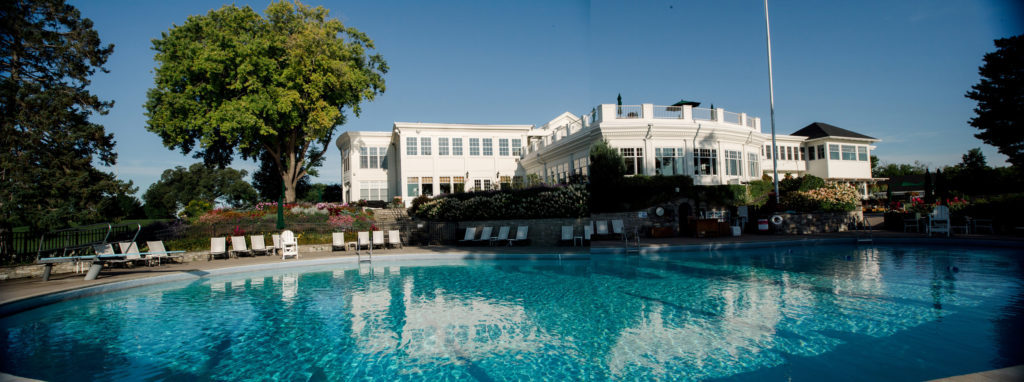HEAD GOLF PROFESSIONAL
EXMOOR COUNTRY CLUB
Highland Park, IL
The Club
Founded in 1896 as Illinois’ third golf club, Exmoor is a private, full-service country club, located in Highland Park, Illinois, 28 miles north of Chicago. With a championship golf course designed by Donald J. Ross, Exmoor continues to fulfill its original mission – as a family club devoted to the game of golf, while offering a growing range of sports and social opportunities. Sports at Exmoor include golf, curling, tennis, swimming, ice skating, platform tennis, cross country skiing and the fastest growing sport in America — pickleball. Members of all ages enjoy a year-round schedule of exciting social activities.
The Club’s mission is to provide the finest golf, sporting, and social experiences for its community of member families and their guests all year long.
The Club maintains high standards for club governance, with an elected leadership that promotes member involvement to attain excellence in Club facilities and member services. Exmoor has earned a reputation for attentive service, modern facilities and fine cuisine. In the late 1890s, the club played an important role in establishing and growing the game of golf in the Midwest. During its 125-year history, Exmoor has hosted more than 20 national golf and curling championships. Our members have won national championships in both sports and have competed in official Olympic golf and curling competitions.
Since its founding, Exmoor members have embraced family activities with a focus on participation, skill development and good sportsmanship. As much as Exmoor values its traditions, today, the spirit of Exmoor is youthful, vibrant, and inclusive.
Exmoor Country Club Overview
- 570 members (Golf: 370, Other: 200)
- Initiation Fee (Resident Member Golf: $75,000)
- Annual Dues (Golf: $13,200)
- $9.2M Gross Volume
- $4.5M Annual Dues Volume
- $4.6M Total Gross Payroll
- 22,000 Annual Golf Rounds
- $650,000 Golf Shop Sales
- Club-owned golf shop, recently transitioned
- Number of Employees (Club (FTE): 94, Seasonal: 71)
- Number of Golf Employees (4-5 year-round employees, 15 added during season)
- 11 Board Members
- Average age of members is 58
Exmoor Country Club Golf Facilities Overview
- 18-hole golf course designed by Donald Ross
- Full driving range with 24 hitting stations
- Large short game practice area with 3 short practice holes
- Indoor Golf Performance Center with 3 heated hitting bays (1 bay is a teaching/fitting studio with V1 video system and Trackman)
- Teaching staff includes: Full-Time Director of Instruction (also lead club fitter), Head Golf Professional, 2 Assistant Professionals with 1 spearheading the Junior Golf Program
- Current Golf Course Architect of record, Andrew Green
- Recently hosted the 2018 Constellation Senior Players Championship and will host the 2022 Western Amateur Championship.
The Head Golf Professional Position
The Head Golf Professional reports directly to the General Manager/COO and coordinates with key management personnel on a regular basis, including the General Manager, Golf Committee, Grounds and Greens Committee, and Executive Staff. The Head Golf Professional implements the policies established by the Board of Governors and the Club’s bylaws. He/she develops operational policies and is responsible for the creation and implementation of standard operating procedures for all areas.
The Head Golf Professional is the lead coordinator of programming and development of synergy among all golf programming, amenities, and services. It is imperative that the Head Golf Professional operate at both a tactical and strategic level, maintain financial accountability, and manage and develop all aspects of golf services. Exemplary service is key in attaining excellence in the member experience.
Driving excellence in the golf experience through training is a critical part of the position. The Head Golf Professional supervises the following positions: Professional Golf Staff, Caddie Master, Golf Merchandiser, Starter/Rangers, and other Outside Services Personnel. Candidates must assume ultimate responsibility for all golf staff, the golf shop, member lessons, special events and tournaments, while working closely with other management for any operational specifics, for course prep, and all golf events needed.
The Head Golf Professional should have a strong presence and seek to be highly visible and accessible to the membership and staff. They set the tone for consistently treating members with a first-class golf experience and communicate this expectation to the entire staff as well.
Primary Responsibilities
- Oversee the management and performance of all golf shop and applicable department operations and services; assure high standards and total member and guest satisfaction.
- Work with Golf Shop Merchandiser to oversee a profitable amenity that is consistent with member demographics and needs; oversee and perform monthly inventory.
- Oversee and enforce golf shop operations policies, procedures, controls, and fee structures to ensure the safekeeping of assets, inventory, resources, sales transactions, and department financial performance.
- Oversee, manage, and submit golf employee’s payroll on a bi-weekly basis; produce a weekly work schedule.
- Oversee all fiscal areas and performance for the golf operations and golf shop including planning, budgeting, forecasting, monitoring, and correction.
- Prepares business plan for all golf operations and golf shop with key aspects of fiscal accountability, operational strategy and marketing strategy for tournaments, special member events, and shop sales.
- Exhibits clear vision of Exmoor Golf in planning, communications, and staffing.
- Responsible for recruiting, interviewing, managing, and developing all staff related to the Golf experience at Exmoor; is current on continual learning options for staff and budget accordingly; assumes prominent and positive leadership role to foster employee engagement.
- Executes golf events that deliver high satisfactory ratings.
- Must be aware of trends and how they may apply to Exmoor; be continually aware of what is working and what isn’t, what can be improved or updated.
- Maintain valuable and ethical relationships with other Club Professionals, and suppliers, as well as other geographic locations to maintain awareness of competitive practices and trends.
- Maintain effective communications with staff for optimum delivery, particularly Engineering, Human Resources, Catering/Events, and Communications.
- Maintain effective communications with membership for special announcements, weekly e-mail notice – collaborates directly with Director of Membership and Communications and Senior Graphics Designer for desired results.
- Ensure health and safety regulations for members and staff by working closely with the Safety Coordinator.
- Create and supervise junior, family, and player development instructor programs.
Important Individual Characteristics
- A naturally enthusiastic personality and passion for the golf industry.
- A natural leadership style which promotes staff and membership engagement.
- The ability to communicate effectively, both verbally and in writing.
- Disciplined accountability to ensure that the training and standards of the Golf department are consistently met.
- Ability to cultivate a high-level of member services and satisfaction.
- Possess a strong understanding of top-notch golf experiences for Club members and guests.
- Effective fiscal management through delivery of actual operational and capital results in alignment with approved budgets.
- Maintain a high level of visibility to members and staff as the face of the golf operation at the Club.
- Ability to cater to various interests and the playing ability of the entire membership demographic.
- Ability to develop a dedicated team with a shared vision.
- Must possess strong leadership ability, influencing skills, demonstrate strong motivational ability.
- Should be results oriented to align Golf strategy to Exmoor’s strategic plan, annual budgets and projected target achievements.
- Should have strong verbal communication skills, presentation skills, and project confident and energetic qualities that produce service excellence.
- Exhibit energy and enthusiasm, maturity of character, creative approach, member focus, logical thinking.
Candidate Qualifications
- A minimum of 7 years of progressive leadership and management experience in the golf industry. Current Head Professionals or Assistant Golf Professionals at well-recognized clubs, with verifiable records of achievement will also be considered.
- Educational credentials in hospitality or golf, a Bachelor’s Degree from an accredited college or university in Hospitality Management, Business, or Sports/Golf is an advantage for applicants.
- Professional Golf Association (PGA) Certification designation as a Class A member of the PGA is required; maintaining memberships in other appropriate professional organizations preferred.
- 3-5 years’ experience in Golf Management or equivalent experience in Golf Management, preferably a PGA Head Golf Professional; demonstrated continual personal and professional development in the sport.
- Should be CPR/AED certified and know first aid.
- Be well versed in relevant software programs for communications, POS, Outlook, and reservations, golf current management software.
- Be current on the latest and most relevant player development methods of techniques.
- Skilled professional in the playing of the game.
Note: A pre-employment drug screen and background check will be required.
Salary & Benefits
Salary is open and commensurate with qualifications and experience. The Club offers an excellent bonus and benefit package.
Inquiries
Interested candidates should submit résumés along with a detailed cover letter which addresses the qualifications and describes your alignment/experience with the prescribed position by Friday, July 30, 2021.
Documents must be saved and emailed in Word or PDF format (save as “Last Name, First Name, Exmoor Head Golf Professional Cover Letter” and “Last Name, First Name, Exmoor Head Golf Professional”) respectively to: execsearchus@ggapartners.com. Please email résumé with references.
For more information about Exmoor Country Club, please visit www.exmoorcountryclub.org.





















